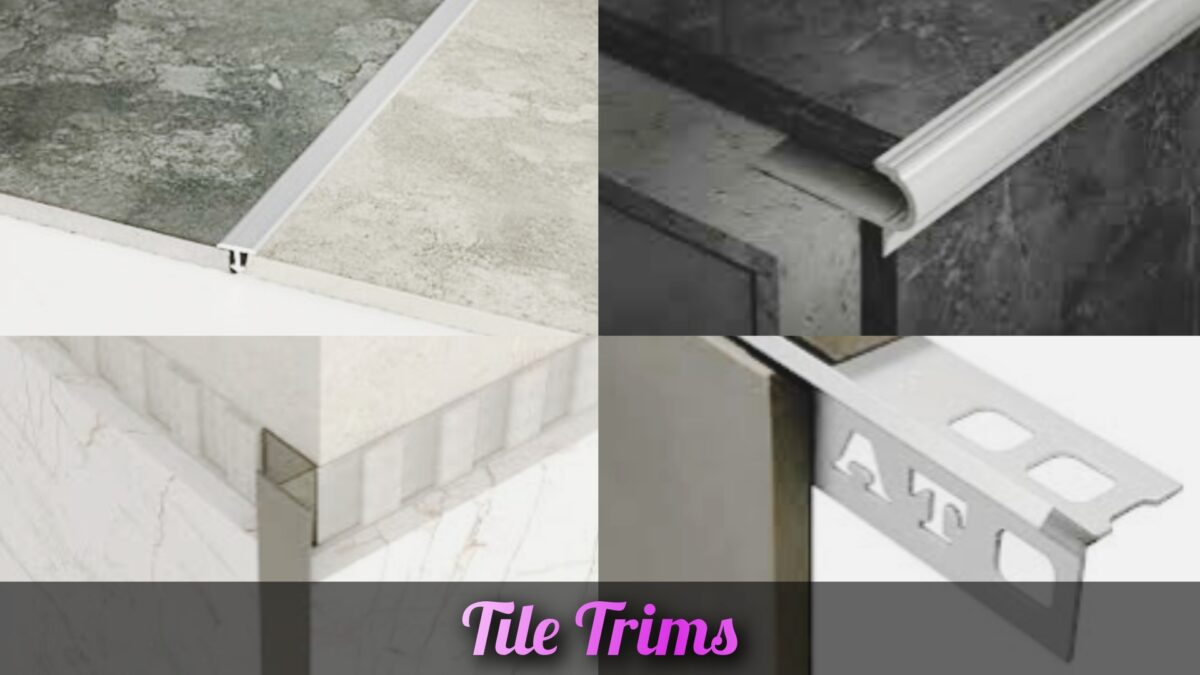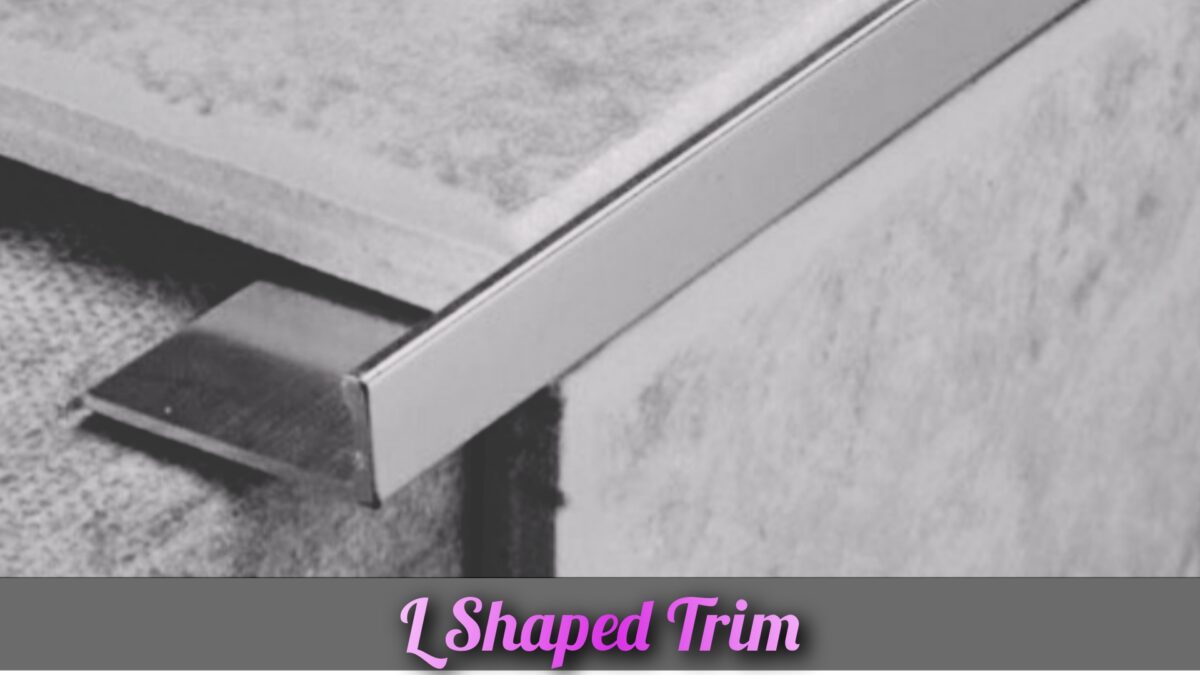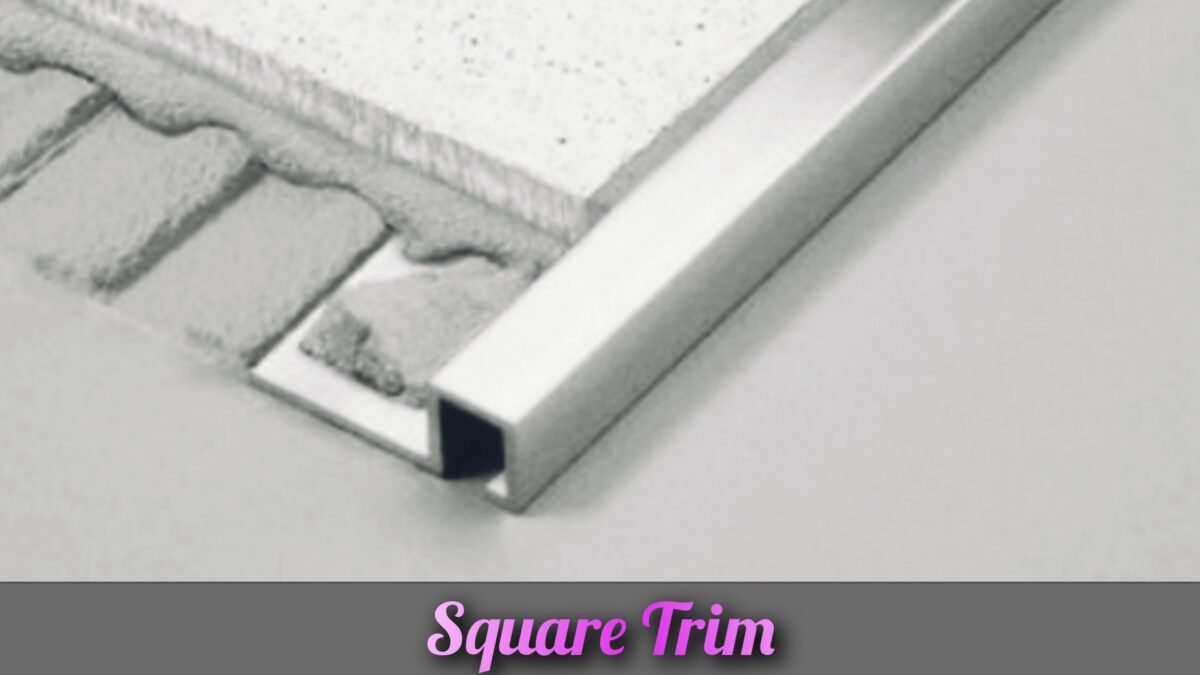Table of Contents
What Is Tile Trim?
Tile trim is a special type of profile used in tile installation work. Tile trim is used to provide a clean and aesthetically pleasing transition between tiles and other surfaces, such as walls, floors, countertops, or backsplashes.

Other names of tiles trimes are tile edging and tile edge trim.
Various Purposes Of Tile Trim
There are various purposes of tile edge trim. Here are some important purposes of tile trims.
1. Edge Protection:
Tile trim protects the exposed edges of tiles from chipping, cracking, or wearing over time. It creates a barrier that helps maintain the structural integrity of the tile edges.
2. Aesthetic Enhancement:
By creating a neat and finished appearance, tile trim enhances the overall look of a tiled surface. It adds a professional touch and can complement the design or style of the tiles.
3. Transition and Continuity:
Tile trim helps create a smooth transition between different surface materials or tile installations. It provides a seamless connection between tiles and adjacent surfaces, ensuring a visually pleasing transition.
Types Of Tile Trims
Tile trim is available in various materials, including metal, plastic, or natural stone, and comes in different profiles and finishes. I have discussed some most common types of tile profiles.
1. L-shaped Trim:
Also known as quadrant trim or angle trim, L-shaped tile trim features a 90-degree angle. It is typically used to protect and finish the exposed edges of wall tiles.

Round Trim: Round tile trim, also called bullnose trim, has a curved or rounded profile. It is commonly used to finish the edges of tiles, particularly on countertops or steps, where a smooth, rounded edge is desired.
2. Square Trim:
Square tile trim has a straight, square profile and is often used to provide a clean edge on floor tiles. It helps protect the corners of tiled areas and creates a defined border.

3. Listello Trim:
Listello trim is a decorative tile trim that adds visual interest and a border-like effect to a tiled surface. It typically features intricate patterns or designs and is used as an accent or focal point within the tile installation.

The choice of tile trim depends on the specific tile installation, design preferences, and the desired level of protection and aesthetics. It is important to select the appropriate trim that complements the tiles and the overall style of the space.
Benefits Of Tile Trims
1. Looks good:
Tile trim makes tiles look neat and finished. It covers the rough edges of tiles and makes them look pretty.
2. Keeps tiles safe:
Tile trim protects the edges of tiles from breaking or getting damaged when something hits them. It keeps the tiles strong and lasts longer.
3. Keeps us safe:
Some tile trim has smooth edges, so we won’t get hurt if we accidentally touch them. It’s important to be safe, especially in busy places or where kids and older people are.
4. Smooth and nice:
Tile trim helps tiles fit together nicely, especially when we have different types of tiles or other kinds of floors nearby. It makes everything look smooth and good.
5. Easy to clean:
With tile trim, it’s easier to keep the tiles clean. It stops dirt and water from getting in between the tiles, so cleaning them becomes easier and faster.
6. Makes tiles stronger:
Tile trim can also make tiles stronger, especially when we put them around windows or doors. It helps the tiles stay in place and not break easily.
7. Pretty designs:
Tile trim comes in many different shapes, colors, and finishes. We can choose the ones we like and make our tiles look even more beautiful.
8. Easy To Install
Installation procedure of tile trimes are very easy. A semi-skilled worker can install tile trimes. It does not take much time to install tile trimes.
I would also recommend you to read my article on types of flooring.
Faqs
Yes, tile trims and floor tile profiles are generally designed for easy installation. They often come with simple mounting systems or adhesive backing, making them accessible for both DIY enthusiasts and professionals.
Yes, tile trims can be used for both wall and floor tiles. They provide protection and a clean edge for tiles in various applications, whether it’s a tiled wall, floor, or even a countertop.
Floor tile profiles with ramp profiles are particularly useful for safety purposes. They help create a smooth transition between different flooring surfaces, reducing the risk of tripping or stumbling over uneven edges.
Yes, tile trims and floor tile profiles are available in a variety of colors and finishes. This allows you to choose a trim or profile that matches or complements the color and style of your tiles, creating a cohesive and visually appealing look.
Yes, there are tile trims and floor tile profiles specifically designed for wet areas like bathrooms. These profiles are often made from materials that are resistant to moisture and corrosion, ensuring long-lasting performance in humid environments.
